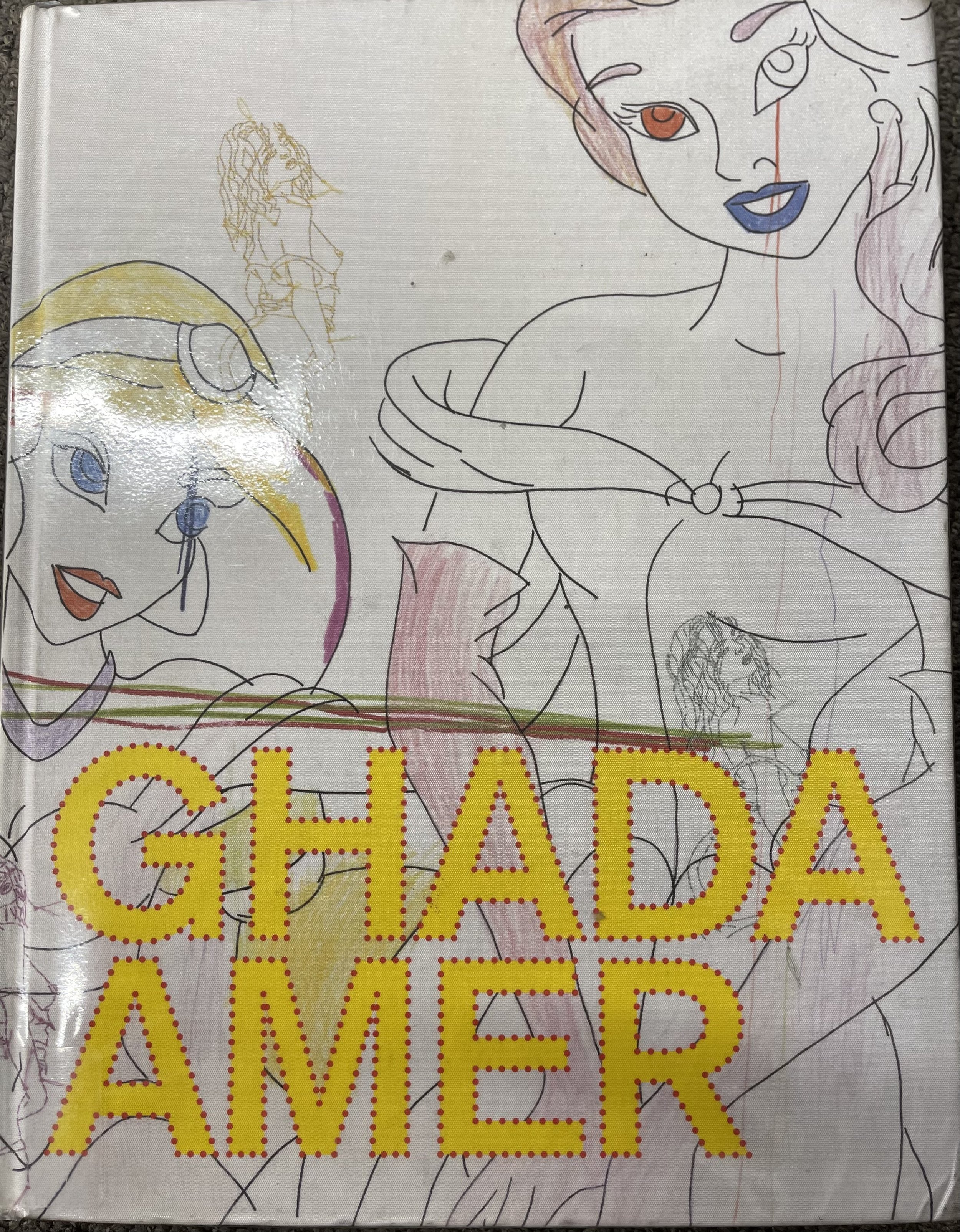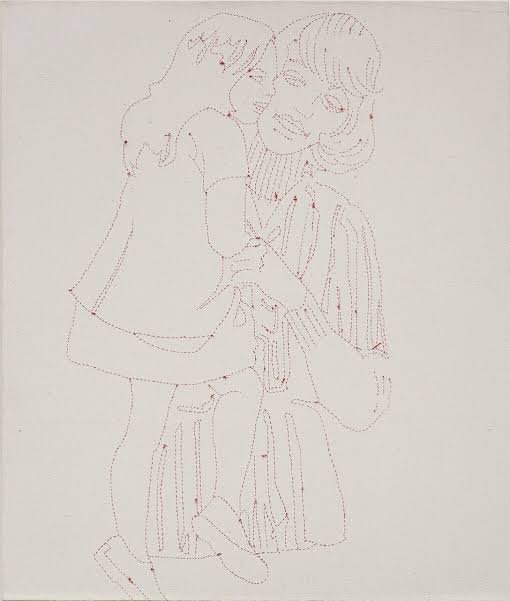The Feminine Line - a closer look at Ghada Amer
In Maura Reilly’s book on Ghada Amer, the opening chapter, Writing the Body, takes a look at Ghada’s early career and how she was influenced by feminist writer and literary theorist, Helene Cixous, notably her essay from 1975 entitled The Laugh of the Medusa.
Woman must write herself: must write about women and bring women to writing, from which they have been driven away as violently as from their bodies…Woman must put herself into the text - as into the world and into history - by her own movement.
Hélène Cixous, “The Laugh of the Medusa”
Footnote: Hélène Cixous, “The Laugh of the Medusa”, Signs 1 no. 4 (Summer 1976):875
Amer wanted her work to address feminist concerns. The term écriture féminine, (women’s writing) was adopted into her work, quite literally but using the technique of embroidery and stitching to develop her own language of painting. Starting off with images of mundane domestic work drawn as sewing patterns, she used the thread and loose ends to act as the gestural line in her paintings. This evolved from initially portraying women carrying out dull domestic tasks to images of pornography and masturbation sourced from explicit magazines. The feminine line of thread appears to tease itself from the surface of the canvas and works to both hide or blur the stitched line drawings that it has been used to outline; which is a clever interplay of line - highlighting and obscuring at the same times and also distorting the traditional images used in embroidery craft. I really enjoyed this interplay and how Amer was challenging the preconceptions of embroidery and the use of thread to obscure the neat pattern.
Her contemporary Tracey Emin, was also producing work in the same vein. Confessional, feminist, sexually confronting, explicit. But this work was from 1990’s and the art world has moved on. I began to think about what the feminine line would look like in 2024.









